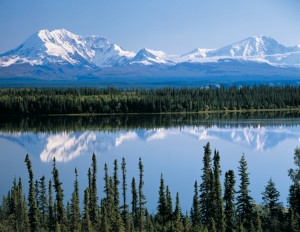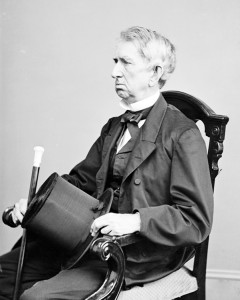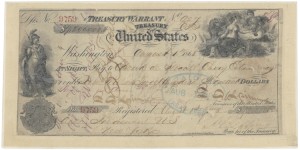Seward’s Icebox: 150 Years
March 30, 2017
Today, March 30, marks 150 years since the United States purchased Alaska from Russia. On March 30, 1867, U.S. Secretary of State William H. Seward signed the Treaty of Cession of Russian America to the United States. The $7.2-million deal (equal to about $112 million today) turned out to be an incredible bargain, but at the time, many Americans opposed the purchase. People ridiculed spending millions of dollars on a largely unknown and frozen wilderness. Critics of the deal called Alaska Seward’s Icebox—or Seward’s Folly, Icebergia, or [then-President] Andrew Johnson’s polar bear garden.

Alaska’s vast wilderness and natural resources went unappreciated in 1867, when skeptical Americans dubbed it Seward’s Icebox. Credit: © David Muench/Stone from Getty Images
Russia had been involved in the Alaska region since the 1600’s. By the late 1700’s, Russian traders and hunters had established settlements in the area, and by the 1820’s, Alaska was recognized as Russian territory. Russian development stalled, however, and after the Crimean War (1853-1856), a weakened Russia was eager to sell Alaska. Russia asked the United States to buy the territory in 1859, but negotiations failed with the threat and then onset of the American Civil War (1861-1865).

U.S. Secretary of State William H. Seward died in 1872, long before his “folly” of the Alaska purchase proved to be a very profitable and worthwhile investment. Credit: © Everett Historical/Shutterstock
Negotiations for the purchase of Alaska resumed after the war, and Russia and the United States reached an agreement in 1867. With money badly needed for Reconstruction, however, few people saw the wisdom in the Alaska purchase. The vast acreage acquired—Alaska increased the size of the United States by nearly 20 percent—failed to impress some people, but Congress approved the purchase in July 1867. Alaska formally came under American control on Oct. 18, 1867.

A United States Treasury warrant for $7,200,000, shown here, was used to purchase Alaska from Russia in 1867. The price came to about 2 cents per acre (5 cents per hectare). Credit: National Archives
With much of the western United States still unexplored or undeveloped, Alaska was not an immediate priority. But the area’s rich natural resources—including fish, gold, and timber—brought people steadily north to Alaska. In 1884, Alaska finally got its first formal laws and government, and in the 1890’s, rich gold strikes quickly increased the territory’s population—and its prestige. Alaska finally shed its image of a frozen wasteland and instead became a new land of opportunity.
In the 1900’s, the discovery of petroleum deposits brought still more people and development to Alaska. During World War II (1939-1945), Alaska proved its value still further as a strategic base of operations. In 1946, Alaskans voted for statehood and began crafting a state constitution. On Jan. 3, 1959, Seward’s Icebox entered the Union as the 49th state. In 1967, on the 100th anniversary of the Alaska purchase, the state adopted the motto, “The Last Frontier.”


